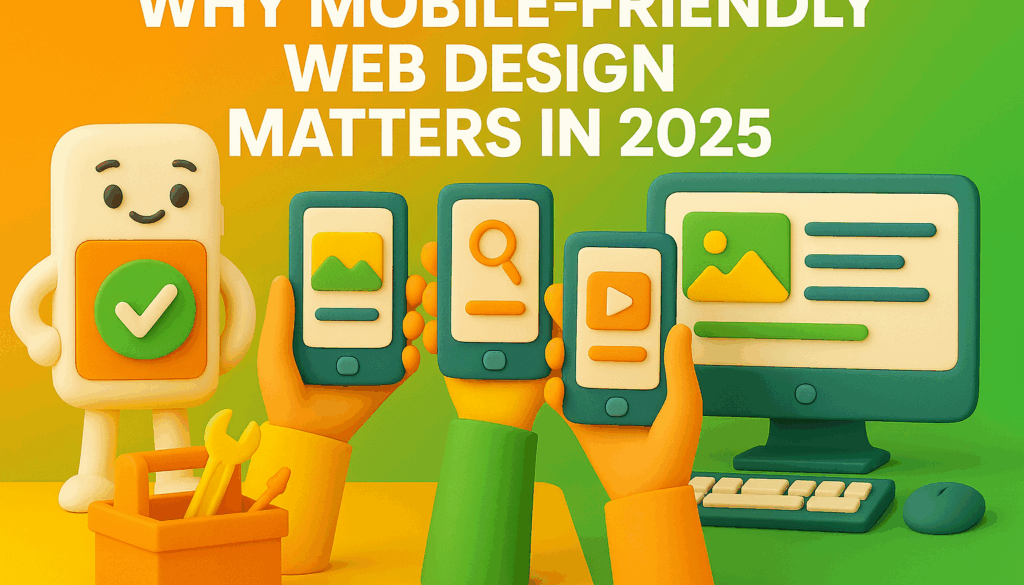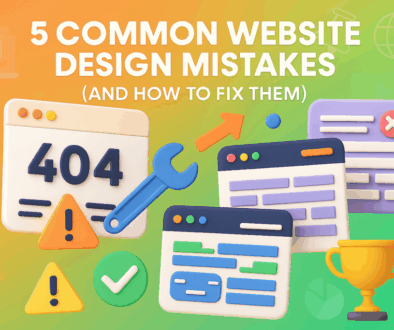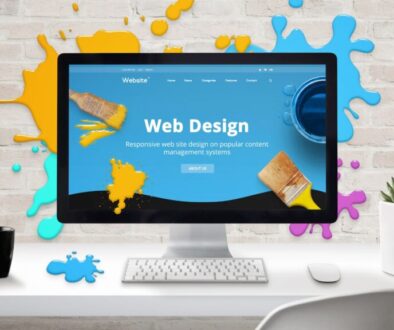Why Mobile-Friendly Web Design Matters in 2025
If you’ve ever pinched and zoomed your way through a clunky website on your phone, you know exactly why mobile-friendly design matters. In 2025, mobile usage isn’t just big; it’s dominant.
Over 63% of all global website traffic comes from mobile devices, and in Alabama, that number tracks right in line. So when someone searches for “marketing agencies near me”, they’re expecting smooth sailing. If your site makes them squint, scroll sideways, or rage-tap a microscopic button, guess what? They’re gone, probably straight to your competitor’s site.
At Zellus Marketing, we make sure your website doesn’t send people running. Our team builds mobile-friendly designs that are clean, fast, and easy to navigate. That means no more pinching, zooming, or guessing where to tap. Instead, your visitors see crisp layouts, readable text, and buttons they can actually press without rage-clicking.
The Google Factor: Mobile-First Indexing
Google isn’t shy about what it wants, and in 2025, it wants mobile. Through mobile-first indexing, Google primarily uses the mobile version of a site to determine its rankings. Translation: if your website looks like a hot mess on a smartphone, it’s not just frustrating visitors, it’s hurting your search engine rankings. Even if your desktop site is gorgeous, a weak mobile design can tank your SEO. And since most people are searching from their phones, ignoring mobile-friendliness is like showing up to a marathon in flip-flops.
Your Customers Are on the Move
Here’s the thing about local business: people find you when they need you right now. That means they’re standing on a street corner, phone in hand, typing “pizza in Birmingham” or “SEO agency Huntsville.” Research shows that 61% of mobile searchers are more likely to contact a local business if the site is mobile-friendly. Imagine someone in Huntsville ready to buy your product, but your site makes them pinch and zoom until their fingers cramp. They’re calling your competitor instead.
What Does Mobile-Friendly Really Mean?
It’s more than just shrinking your desktop site to fit a smaller screen. A truly mobile-friendly design includes:
Responsive layout
The site adapts automatically to different screen sizes, from iPhones to Android tablets.
Fast load speeds
Mobile users are often on cellular connections, and they’re not waiting around for your 10MB homepage image to load.
Readable fonts
Text should be large enough to read without zooming. (If your site requires eagle vision, it’s not mobile-friendly.)
Tap-friendly navigation
Buttons and links sized for thumbs, not sewing needles.
Mobile features
Click-to-call buttons, map integrations, and easy-to-use forms make it effortless for users to connect with you.
Improving Mobile Experience: Practical Steps
Ready to level up your mobile usability? Here’s how:
-
Use a responsive framework
Platforms like WordPress and Shopify offer mobile-first themes out of the box.
-
Test on real devices
Free tools like Google’s Mobile-Friendly Test or simply borrowing your friend’s phone can expose hidden issues.
-
Speed matters
Compress images, enable browser caching, and consider a content delivery network (CDN).
-
Ditch the pop-ups
That newsletter subscription box covering your entire screen? Delete it or make it less intrusive.
-
Simplify navigation
Keep menus short, sweet, and tappable.
Every tweak you make toward mobile usability increases the chances of conversions, whether that’s a phone call, form submission, or purchase.
Mobile-Friendly Design Is for Every Business
Short answer: everyone. Whether you’re a small local coffee shop or a national SEO company, your audience is browsing on mobile. For businesses in Alabama, mobile usability is not just a nice-to-have; it is table stakes. If your site is not optimized, you are leaving money on the table and handing potential customers to your competitors.
Think about how people actually use their phones today. They are searching for a late-night restaurant, scrolling through marketing agency options in Huntsville, or checking reviews for a plumber while standing in a flooded kitchen. No matter the industry, your customers are likely discovering you on their mobile devices before they ever step foot in your store, call your office, or fill out a contact form.
Mobile-friendly design also levels the playing field. A small boutique in Birmingham can look just as polished and professional online as a national chain if the website loads quickly, is easy to navigate, and gives users what they want without friction. On the flip side, even the biggest brand can lose credibility if its site frustrates users.
And let us not forget SEO. Google prioritizes mobile-friendly sites in search results. That means if your site is not optimized, you are not just frustrating users, you are also lowering your visibility to new customers who are ready to buy.
Signs It’s Time for a Website Upgrade
If your website has not had a redesign since the Obama administration, the time is now. Trends move quickly, and web technology evolves even faster. A site that was “good enough” in 2018 is probably a liability today. Outdated designs often load slowly, break on newer devices, or lack the modern features users expect. If your bounce rate is climbing or customers complain about navigation, that is your cue to upgrade.
Here are a few red flags that signal it is time for a refresh:
- Slow loading speeds: If your site takes more than three seconds to load, users are likely to abandon it. Speed is not only critical for user experience but also a ranking factor in Google search results.
- Poor mobile experience: Buttons that are too small, text that requires zooming, or layouts that shift around on phones are signs your site is not keeping up with mobile-first design.
- Outdated visuals: Design trends change. A site that looks cluttered, uses old stock photos, or has fonts that feel outdated can make your business look less credible.
- Lack of modern features: Customers expect simple things like click-to-call buttons, map integrations, online booking, and chat support. If your site cannot deliver, you risk losing leads.
- Difficult navigation: If users struggle to find what they need in just a few clicks, they will not stick around. Long menus or confusing layouts often push people away.
- Security concerns: Websites without HTTPS encryption, SSL certificates, or updated plugins are not just a liability, they can actively drive visitors away with browser warnings.
The truth is, your website is often the first impression a customer gets of your business. An outdated site does not just look bad, it signals to potential clients that your company may not be keeping up with the times. Investing in a redesign ensures you stay competitive, credible, and accessible to the people you want to reach.
The Local Edge of Mobile-Friendly Design
Local businesses in Birmingham, Huntsville, and across Alabama need mobile-friendly sites to compete. Mobile usability is especially crucial for service-based industries like restaurants, plumbers, HVAC companies, and marketing agencies because customers want answers immediately. A smooth mobile experience means someone can call, book, or order in just a few taps. If that process takes too long, they’re moving on to the next option.
How to Get It Done
You can wrestle with responsive design templates yourself, or you can partner with a marketing company that knows how to build sleek, conversion-ready mobile websites. Zellus specializes in designing sites that not only look good on your phone but also perform well in search results.
The difference comes down to strategy. Anyone can plug content into a pre-made template, but true mobile optimization requires thoughtful design choices, SEO integration, and user-focused functionality. At Zellus, we create websites that load quickly, guide visitors smoothly to the information they want, and turn clicks into calls, bookings, or purchases.
We also understand that mobile users have short attention spans. That is why our designs focus on clear navigation, thumb-friendly buttons, and layouts that keep your audience engaged instead of frustrated. Add in SEO best practices, local search optimization, and built-in features like click-to-call or map integrations, and your site becomes more than a digital brochure—it becomes a growth engine for your business.
When you work with Zellus, you are not just getting a website that looks modern. You are getting a site built to rank higher, convert better, and make your business stand out in Birmingham, Huntsville, and across Alabama.
What Sets Us Apart
Our clients do not just stay with us, they grow with us. Businesses across Alabama rely on us because we take outdated, clunky websites and turn them into sleek with our Website Design Services, mobile-optimized platforms that drive real results. Every site we design is built to load fast, rank higher in search engines, and make it simple for customers to take action.
What truly sets us apart is our focus on strategy over fluff. We do not push cookie-cutter templates or one-size-fits-all solutions. Instead, we listen to what your business needs and build a website that works as hard as you do. The result is a digital presence that attracts customers, builds trust, and helps your business stand out in a crowded market.
The Basics Every Business Owner Should Understand
How do I know if my site is mobile-friendly?
- Use Google’s free Mobile-Friendly Test tool. Or just pull up your site on your phone, if it’s hard to use, your customers feel the same way.
Does mobile-friendliness affect SEO?
- Absolutely. With mobile-first indexing, Google is judging your site’s mobile version. A poor mobile experience can sink your rankings.
Can a marketing agency fix my mobile site?
- Yes. A good SEO agency or marketing company can audit your site, implement responsive design, and optimize performance.
What’s the cost of ignoring mobile usability?
- Lost customers. If your site frustrates mobile visitors, they’ll leave and likely never return. You’ll also lose search visibility over time.
Do I need a separate mobile site?
- Not anymore. Modern responsive design adapts one site to multiple devices, so you don’t need a clunky “m.yoursite.com” version.
What about speed on mobile?
- It’s critical. People expect fast load times, especially on mobile. Every second of delay can increase bounce rates and reduce conversions.
How often should I update my site for mobile?
- At least every few years, with regular audits in between. Mobile standards and user expectations evolve constantly.
Don’t Get Left Behind
Mobile-friendly design is not optional in 2025, it is survival. With mobile usage driving the majority of web traffic, Google doubling down on mobile-first indexing, and local consumers expecting seamless usability, the stakes could not be higher. A mobile-optimized site is the difference between capturing a lead and losing them to the competition.
Building a website without a mobile in mind is like opening a store with the lights off. Let’s flip the switch and make sure customers actually see you.



